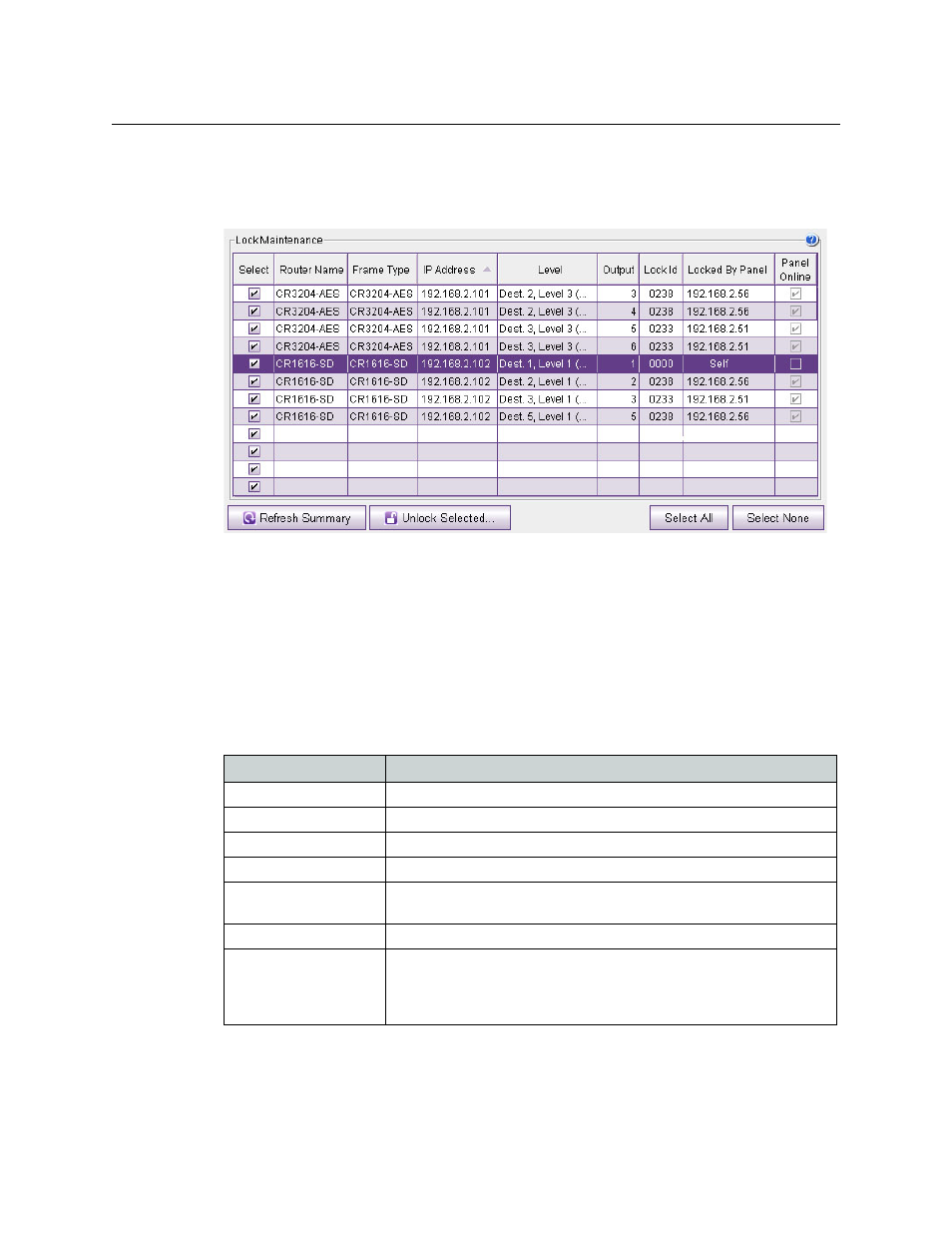Using the lock maintenance page – Grass Valley CRSC v.3.2 User Manual
Page 112

100
Locks Page
Using the Lock Maintenance Page
Using the Lock Maintenance Page
Locks are listed for each
output that is locked, not for each level nor for each destination. A single
destination lock usually includes locks on several levels (i.e, several outputs).
Fig. 9-1: Lock Maintenance Page
The levels are “flattened” in the lock list displayed on the lock maintenance page. For example, if
a 32×32 HD router had two partitions each numbered 1–16 and 1–16, the range reported for the
HD router is 1–32 and the output number given is for the router, not the partition (or level).
The case of AES routers is distinct: an AES router output is a stereo pair unless the router is in
synchronous mode. Therefore, a single stereo output appears twice in the list.
The case of machine control routers is also distinct: a machine control route is bidirectional.
Therefore both ports of the route appear in the lock list.
The page presents the following information:
Column
Description
Select
Select the check box on the row listing the panel you want to unlock.
Router Name
Name of the router.
Frame Type
Type (model) of compact router.
IP Address
IP address currently assigned to the device.
Level
Destination, level number, and level name for each router output that is cur-
rently locked.
Output
The output that is locked.
Lock ID
Entries in the ‘Lock ID’ column are hexadecimal values used by automation
systems that follow a serial protocol. The automation system uses lock IDs as
“passwords” to lock and unlock router outputs. You may safely ignore lock
IDs.
